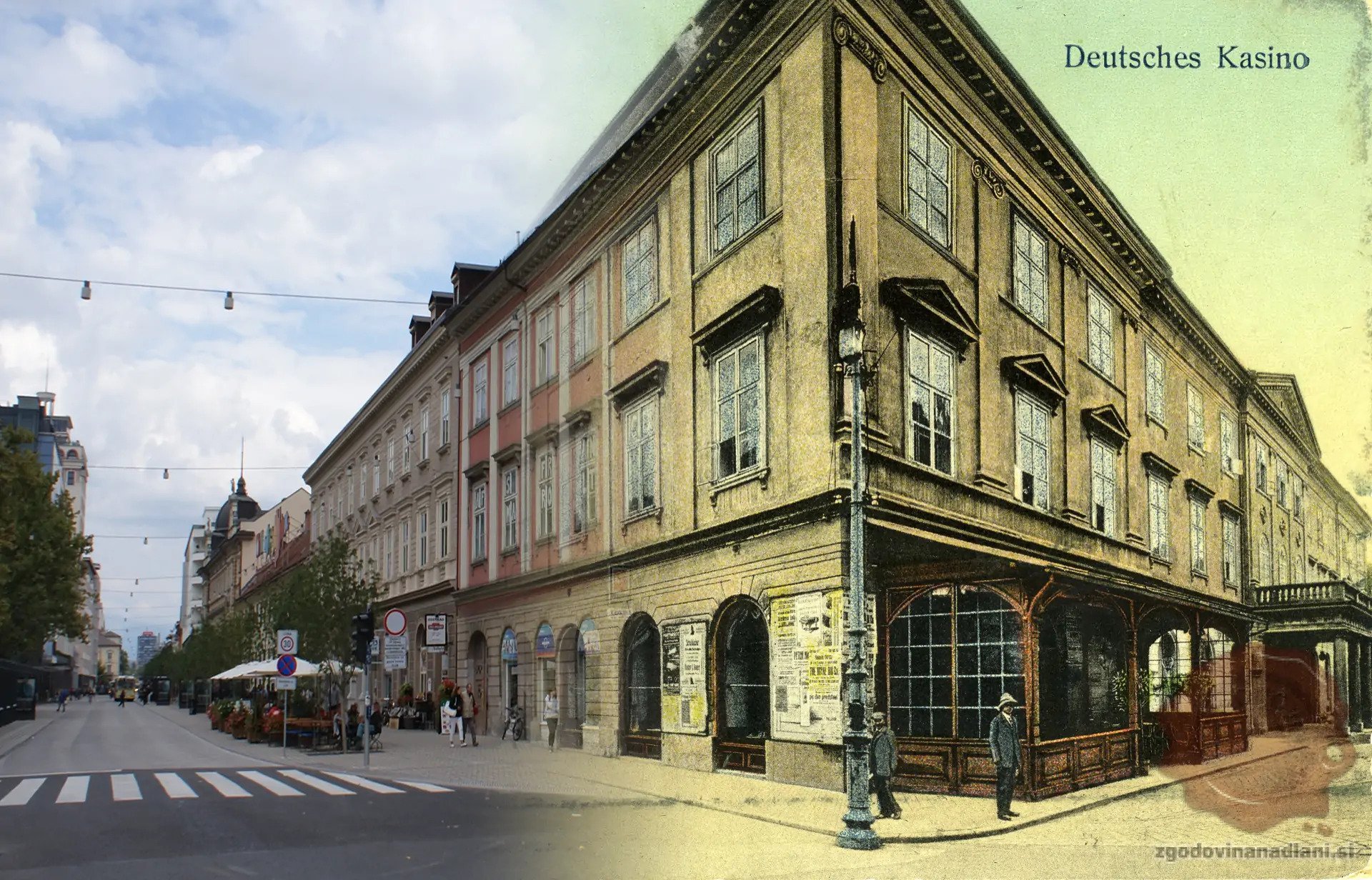
Our Story & History of the Kazina Building
Welcome to our vision at the Jazz Club nestled within Ljubljana's historic Kazina building
By reviving its original purpose as a haven for the bourgeois, academics, and aficionados of high-quality Music & Gastronomy, we aim to infuse sophistication into every note played and drink served.
From live jazz during the day to nightly performances, our ambiance exudes cultural refinement. Indulge in our culinary offerings featuring a fusion of Italian, Istrian, and French delights—perfect accompaniments to the soulful melodies echoing through our halls.
Join us as we transport you back to an era of elegance, where music, cuisine, and conversation intertwine harmoniously.
Kazina Building today.
Photo: Miran Kambič
Nestled in the heart of Slovenia's vibrant capital, Ljubljana, the Kazina building stands as a testament to the city's rich history and cultural significance.
Originally constructed in the early 19th century, this architectural gem has witnessed the ebb and flow of time, evolving from its humble beginnings into a cherished symbol of artistic expression and community.
The story of the Kazina building begins in 1821 when it was built as a gathering place for the local elite. Designed by the renowned architect Josef Eltz, its neoclassical façade exuded elegance and sophistication, reflecting the aspirations of a burgeoning society seeking to establish its cultural identity. Over the years, the building served various purposes, ranging from a social club to a cultural center, adapting to the changing needs of the city and its inhabitants.
Throughout the 20th century, the Kazina building witnessed significant historical events, including the tumultuous periods of World War I and World War II. Despite facing challenges and uncertainties, it remained a beacon of resilience, providing solace and inspiration to those seeking refuge from the chaos of the outside world.
Julij Bedett’s Hall (1839)
Kazina Building during the 2. World War (1941)


